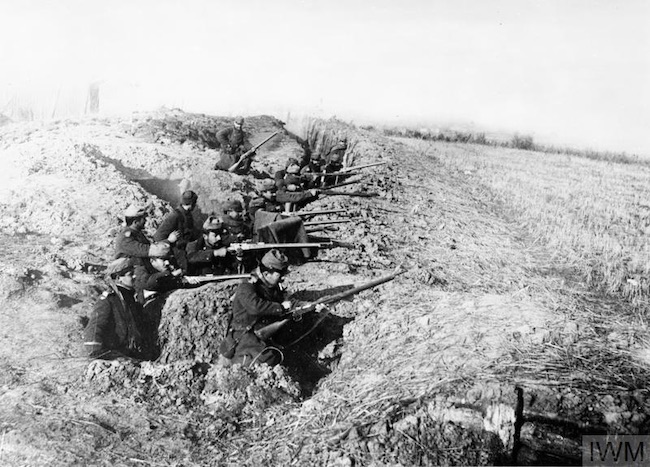Warfare of WWI |
| Introduction |
| Trench Warfare |
| New Weapons |
| Industrialization |
| Total War |

World War I, also known as the Great War, witnessed a profound convergence of industrialization and warfare on an unprecedented scale. The conflict, spanning from 1914 to 1918, showcased the transformative power of industrial advancements in shaping the strategies, logistics, and outcomes of the war.
-
Trench warfare: Trench warfare was a key characteristic of World War 1, with soldiers digging deep trenches in the ground to protect themselves from enemy fire. This led to a stalemate on the Western Front and a war of attrition.
-
New weapons: World War 1 saw the introduction of new weapons, such as machine guns, gas, and tanks. These weapons were more deadly and efficient than previous weapons and had a significant impact on the course of the war.
-
Industrialization: The war was fought on an industrial scale, with factories producing weapons and ammunition for the troops. This led to the development of new technologies and methods of production, such as assembly-line production, that would have a lasting impact on the world.
-
Total war: World War 1 was a total war, with entire nations mobilized for war effort. The war affected civilians as well as soldiers, and civilians were targeted as a way of weakening the enemy's morale and resolve.
-
Global scope: World War 1 was a global conflict that involved many nations around the world. The war was fought on several continents and involved soldiers and civilians from many different countries.